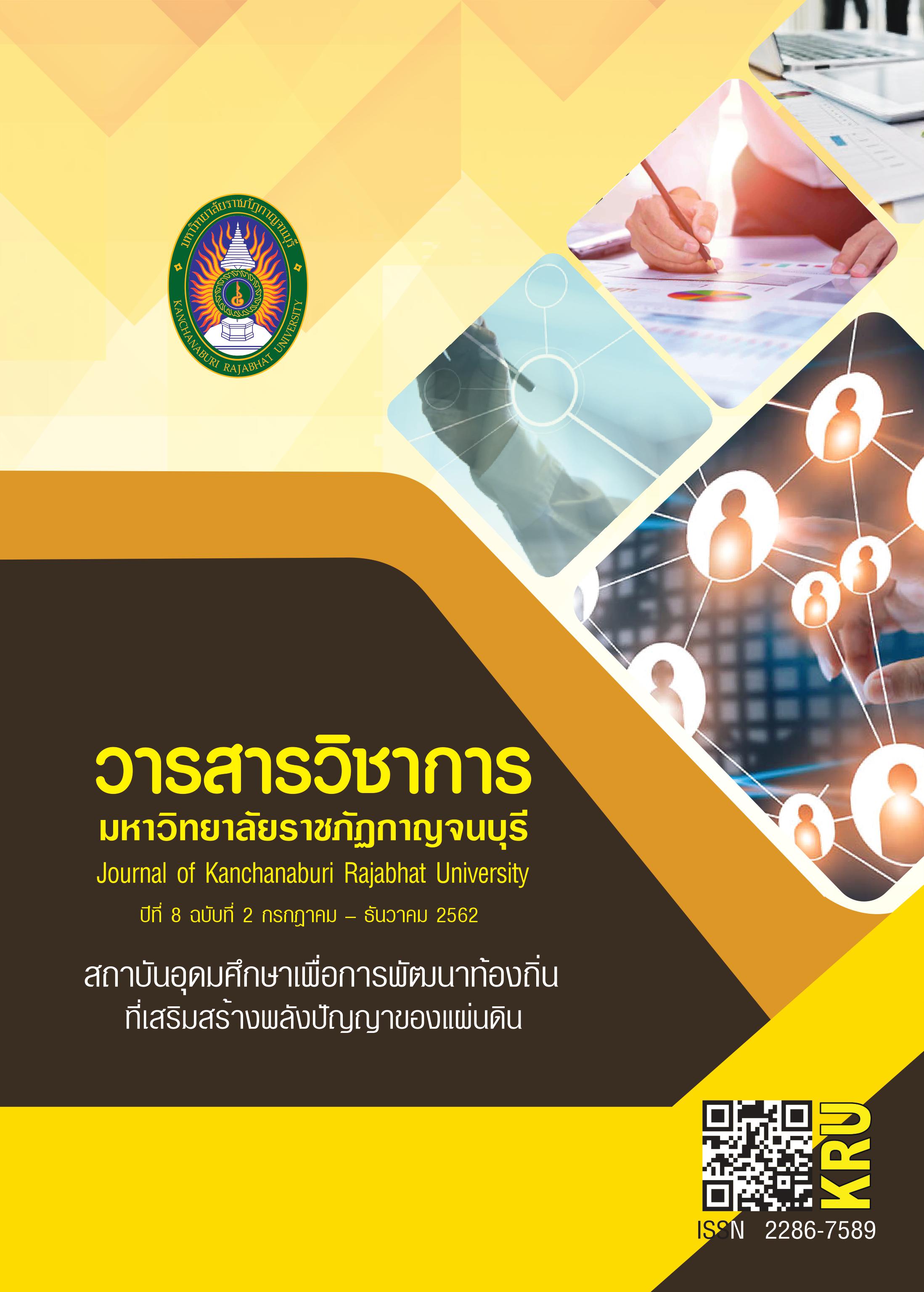A DEVELOPMENT OF THE INTENTION TO LEAVE SCALE FOR OFFICER IN BANGKOK METROPOLITAN REGION: CROSS VALIDATION ANALYSIS Cross Validation Analysis
Main Article Content
Abstract
This research aimed to 1) develop and examine the structure of the intention to leave scale for officers in Bangkok metropolitan region and 2) test construct validity of the intention to leave scale for officers. The measurement was tested on 200 officers in Bangkok metropolitan region in phase 1 and 460 officers in phase 2. Data were collected using self-report questionnaire including personal data and the intention to leave scale. Frequency, percentage, mean and standard deviation, exploratory factor analysis, parallel analysis, Map test and confirmatory factor analysis were used to analyze data. The results yielded that 1) the intention to leave scale was 2-factor structure including intention to stay and intention to leave with high reliability, 0.93 and 0.88 accordingly and 2) the result of confirmatory factor analysis demonstrated that the intention to leave measurement model labeled statistical robustness with a high quality of construct validity.
Article Details
References
ของบุคลากรสายงานหลักกรมการแพทย์ไทยและการแพทย์ทางเลือกกระทรวงสาธารณสุข.
วารสารสาธารณสุขศาสตร์, 48 (3), 308-318.
กองเศรษฐกิจการแรงงาน. (2562). เศรษฐกิจแรงงาน ประจำเดือนธันวาคม 2561. ค้นเมื่อ มิถุนายน 15, 2562,
จาก http://warning.mol.go.th/uploadFile/pdf/pdf-2019-01-29-1548741821.pdf,.
เดชา เดชะวัฒนไพศาล. (2559). ความสัมพันธ์เชิงเหตุผลของพันธสัญญาทางใจของพนักงานจ้างภายนอก. วารสาร
พัฒนบริหารศาสตร์, 56 (1), 67-94.
นฤมล นุ้ยรัตน์ และกัญญดา ประจุศิลป. (2561). ความสัมพันธ์ระหว่างปัจจัยส่วนบุคคลสมดุลชีวิตกับการทำงาน
การสนับสนุนจากองค์การกับความตั้งใจคงอยู่ในงานของพยาบาลผู้มีประสบการณ์โรงพยาบาลเอกชนที่ผ่านการรับรอง
โรงพยาบาลมาตรฐานสากลกรุงเทพมหานคร. วารสารพยาบาลทหารบก, 19 (ฉบับพิเศษ), 149-157.
ศรัญยา แสงลิ้มสุวรรณ, สุพจน์ นาคสวัสดิ์, พูลพงศ์ สุขสว่าง และกาญจนา แสงลิ้มสุวรรณ. (2556). การพัฒนา
โมเดลความผูกพันของพนักงานต่อองค์การของพนักงานในบริษัทสัญชาติญี่ปุ่นในประเทศไทย.
วารสารพฤติกรรมศาสตร์ม, 19 (2), 78-93.
ศุภลักษ์ แลปรุรัตน์. (2557). ความพึงพอใจในการทำงานและความตั้งใจลาออก: การศึกษาในพนักงานเจนเนอเรชั่น
วายของธนาคารพาณิชย์ในจังหวัดขอนแก่น ประเทศไทย. Veridian E-Journal, 7 (3), 863-877.
Ampomah, P. and Cudjor, S.K. (2015). The Effect of Employee Turnover on Organizations (Case
Study of Electricity Company of Ghana, Cape Coast). Asian Journal of Social Sciences
and Management Studies, 2 (1), 21-24.
Ghosh, P., Satyawadi, R., Joshi, J.P. and Shadman, M. (2012). Who stays with you? Factors predicting
employees’ intention to stay. International Journal of Organizational Analysis, 21 (3), 288-312.
GNU Project. (2015). GNU PSPP (Version 0.8.5) [Computer Software]. MA: Free Software Foundation.
Hair, J.F., Black, W.C., Babin, B.J., Anderson, R.E. and Tatham, R.L. (2006). Multivariate Data
Analysis. NJ: Prentice Hall.
Hayton, J.C., Allen, D.G., and Scarpello, V. (2004). Factor retention decisions in exploratory factor
analysis: A tutorial on parallel analysis. Organizational research methods, 7 (2), 191-205.
Medina, E. (2012). Job satisfaction and employee turnover intention: what does organizational culture
have to do with it? (Doctoral dissertation). New York: Columbia University.
Menezes, I., Lozado, J., Menezes, A. C., Moraes, E., Sandbrand, D., Muszynski, P., and Ruggeri, K.
(2018). Development and validation of the Multidimensional Turnover Intentions Scale.
British Academy of Management Conference 2018. Bristol: United Kingdom.
Nanncarrow, S., Bradbury, J., Pit, S. W., and Ariss, S. (2014). Intention to stay and intention to leave: are they
two sides of the same coin? A cross-sectional structural equation modelling study among
health and social care workers. Journal of occupational health, 56, 292-300.
O’connor, B.P. (2000). SPSS and SAS programs for determining the number of components using
parallel analysis and Velicer’s MAP test. Behavior research methods, instruments, and
computers, 32 (3), 396-402.
Osborne, J.W. (2014). Best Practices in Exploratory Factor Analysis. CA: CreateSpace Independent.
Preacher, K.J., and Coffman, D.L. (2006). Computing power and minimum sample size for
RMSEA [Computer software]. Available from http://quantpsy.org/.
Rizwan, M., Arshad, M.Q., Munir, H.M., Iqba, F., and Hussain, A. (2014). Determinants of Employees
intention to leave: A study from Pakistan. International Journal of Human Resource
Studies, 4 (3), 1-18.
Salazar, M.S. (2015). The dilemma of combining positive and negative items in scales.
Psicothema, 27 (2), 192-199.
Schreiber, J.B. (2017). Update to core reporting practices in structural equation modeling.
Research in Social and Administrative Pharmacy, 13 (3), 634-643.


